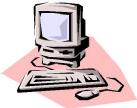Information technology in Oakland's
Currently Oakland's has a number of unconnected software systems. These run on a central small mainframe. There are an increasing number of PCs, especially in the office, where they are primarily used for word-processing. The payroll, accounts and a CAD package are the major systems in use on the mainframe. The first two are standard packages, although with "bits added in here and bits taken out there". The CAD package has evolved way beyond the original version, largely on account of Rowan Gregory's enthusiasm and predilection for experiment - aided and abetted by Jean. However, this is now getting very creaky and unwieldy, and far more effective packages can be bought on the market. Moreover, these newer systems can run very effectively on the new generation of workstations, and do not require the mainframe.
There is also a relatively small locally-written sales order system, inherited from Jean's predecessor. This offers amazingly few problems and certainly nothing that Jean cannot cope with, but it is rather basic. It is good for generating the appropriate paperwork for vendors and for linking up with the accounts as far as financial transactions are concerned. But it is useless for tracking materials or for stock control within the company. This is because it focuses on the monetary aspects of the transactions, with only a general description of the materials involved.
There is no systematic parts numbering system. The present plethora of piece parts (some 22,000 and growing) is described in a vast array of drawings and process specifications that reside in an untidy set of filing chests in the design office. Robin Johnston, Rowan Gregory and Jan Pettigrew between them, hold all the information necessary for linking the final products to the raw material inputs, essentially in their heads. Piece parts are coded after a fashion, but in descriptive terms which refer to the ultimate item of furniture of which they are a part. As far as orders for raw materials are concerned, these are couched in terms of broad categories with no cross reference to the piece parts they will be used to make: For instance, so many metres of such and such a timber stock; or so many square metres of this type of chipboard.

